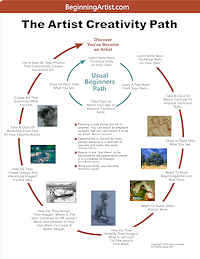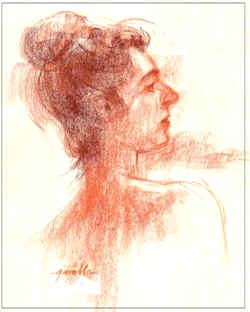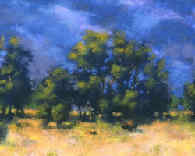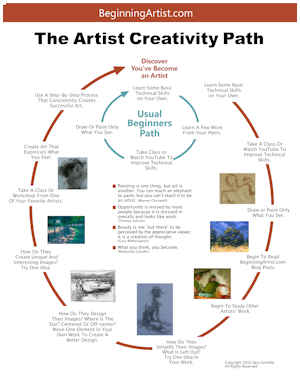The Proven Path To Exploiting
Your Creativity.

Everyone knows you're either born with creativity or you aren't, right?
Wrong.
I believe we all have it inside us. Look at how creative most children are. Anything is possible to them.
Then you get a little older and, through lack of confidence or the imposed opinion of someone else, you may come to believe you have very little of it.
In which case, art supplies are put away and it gets used in other ways. But, it keeps gently nudging you to get those art supplies back out.
Here is where you decide to follow either the perpetual Beginner's Path or the Artist's Path to developing your talent.

The Beginner's Path
The Beginner's Path starts with learning to draw or paint on your own. Then you may learn a little more about the techniques of drawing or painting from a class you take or from watching YouTube videos.
You may never leave the Beginner's Path, drawing or painting only exactly what you see. You may gradually improve your technique of drawing or painting a bit, but your creativity stays firmly stored in your mental closet.
The Artist's Path
Or you may choose to follow the Artist Path. As you progress you may or may not even think of it as the path to becoming an artist.

At first, this path is just like the Beginner's Path. Then at some point you encounter something, like BeginningArtist.com, that sparks your interest and holds the promise of greater things.
You soon realize the importance of drawing and learning to measure proportion like an artist.
You begin to look at the work of more experienced artists.
You begin to try to discover their secrets. You read my blog. You look on YouTube, on websites, in books.
Maybe you buy a DVD or two.
How do they simplify their images? What do they leave out and why? You begin to try just a little of that in your work.
It's one of the first tiny steps along the Artist's Path.
You begin to take notice of the design or composition of their work. Where do they usually put the star? In the exact center? Or off-center?
You begin to try moving your center of focus or some other element in your work. It may be scary at first, but you like the result.
Another tiny step along the path.

You begin to notice how your favorite artists produce interesting images. You notice how they use contrasts.
Detailed areas vs simpler ones. Brightly colored areas vs more subdued ones.
You begin to try doing a little of that in your own work. Another tiny step.
Maybe you take a class or workshop from an artist whose work you admire. You want to go deeper than just drawing or painting techniques.
All these tiny steps that don't seem like a big deal at the time, gradually build your confidence, your imagination and your creativity.
You no longer wonder whether you have talent.
It's there in everything you do.
Best Wishes,
Gary Gumble
Founder of BeginningArtist.com
Without art the crudeness of reality would make the world unbearable. (George Bernard Shaw)
P.S. It may be tempting to believe that you can simply remember all the things I've shown you about making good art.
You'll just pull them out of your hat at some future time.
But, until you actually take those first tiny steps down your creativity path, it remains in your mental closet.
So, in order for you to "come out of the closet", so to speak, I have a guide to help you. It shows you the steps to finding and developing your creativity.
You can have it at no cost. Just click this link to download your PDF copy of The Artist Creativity Path.
Copyright Gary Gumble 2023 All rights reserved About Privacy Policy Terms of Use Contact www.beginningartist.com 27 rue Roucher, 34000 Montpellier, France
